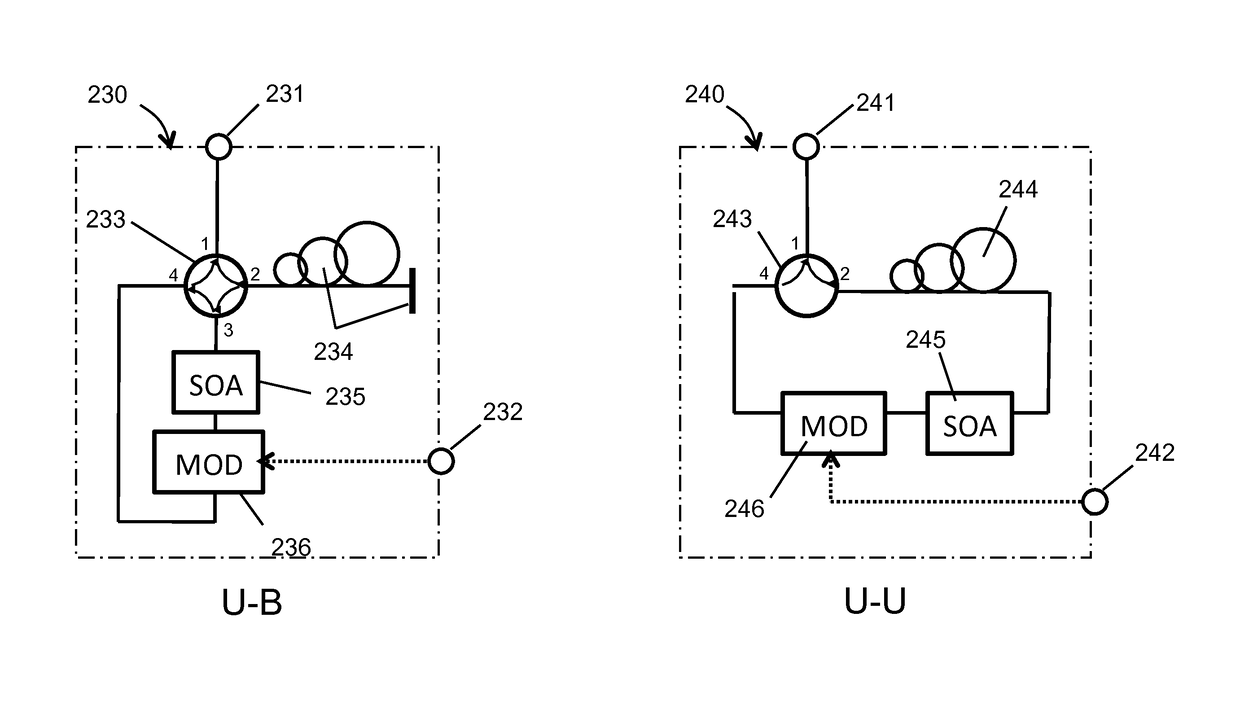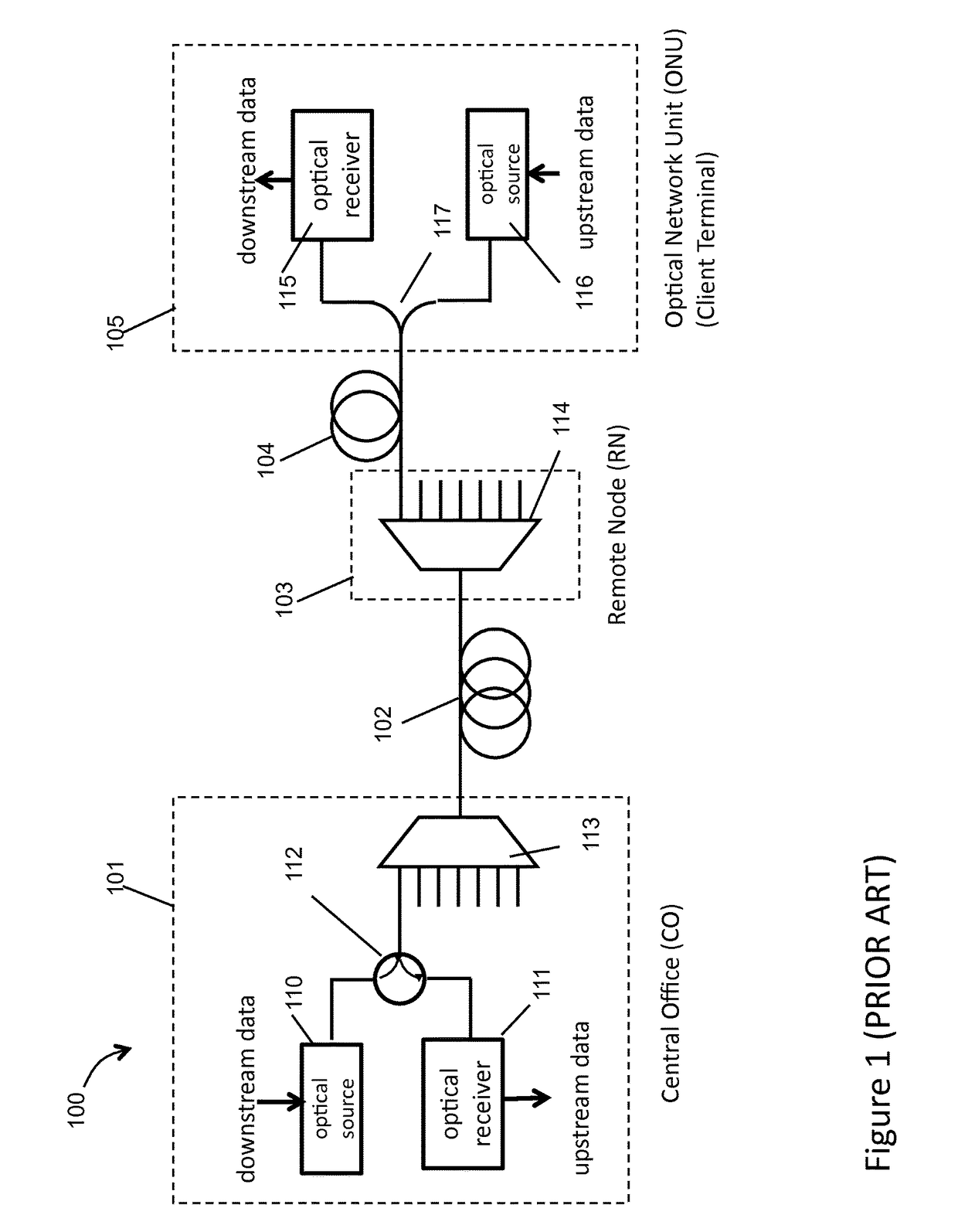Wavelength-reuse fiber-optic transmitters
a technology of which is applied in the field ofwavelength-reuse fiber-optic transmitters and transceivers, can solve the problems of high cost of wdm optical and optoelectronic components, shift of filter wavelengths, and high cost of components, so as to achieve the effect of improving performan
- Summary
- Abstract
- Description
- Claims
- Application Information
AI Technical Summary
Benefits of technology
Problems solved by technology
Method used
Image
Examples
Embodiment Construction
Optical Modulation Averaging Structures
[0021]A modulation averaging structure is generally a reciprocal two-port optical component that averages intensity modulation in an optical signal in which the information is encoded in optical intensity with periodic modulation with symbol rate B equal or greater than the modulation-averaging structure's design rate B. Intensity modulation refers to any amplitude modulation characterized by (i) the symbol state duration τ, (ii) the number of intensity levels into which information is encoded, (iii) the frequency content, and (iv) the maximum runlength of the modulated optical signal. The number of symbol changes per second in a signal is referred to as symbol rate B. Symbol rate is also referred to as baud rate or modulation rate in digitally modulated signals and is measured in baud (Bd) or symbols / second. The symbol rate is related to, but should not be confused with, the bitrate which is the number of bits transmitted per second, because e...
PUM
| Property | Measurement | Unit |
|---|---|---|
| reflectivity | aaaaa | aaaaa |
| reflectivity | aaaaa | aaaaa |
| insertion loss | aaaaa | aaaaa |
Abstract
Description
Claims
Application Information
 Login to View More
Login to View More - R&D
- Intellectual Property
- Life Sciences
- Materials
- Tech Scout
- Unparalleled Data Quality
- Higher Quality Content
- 60% Fewer Hallucinations
Browse by: Latest US Patents, China's latest patents, Technical Efficacy Thesaurus, Application Domain, Technology Topic, Popular Technical Reports.
© 2025 PatSnap. All rights reserved.Legal|Privacy policy|Modern Slavery Act Transparency Statement|Sitemap|About US| Contact US: help@patsnap.com



